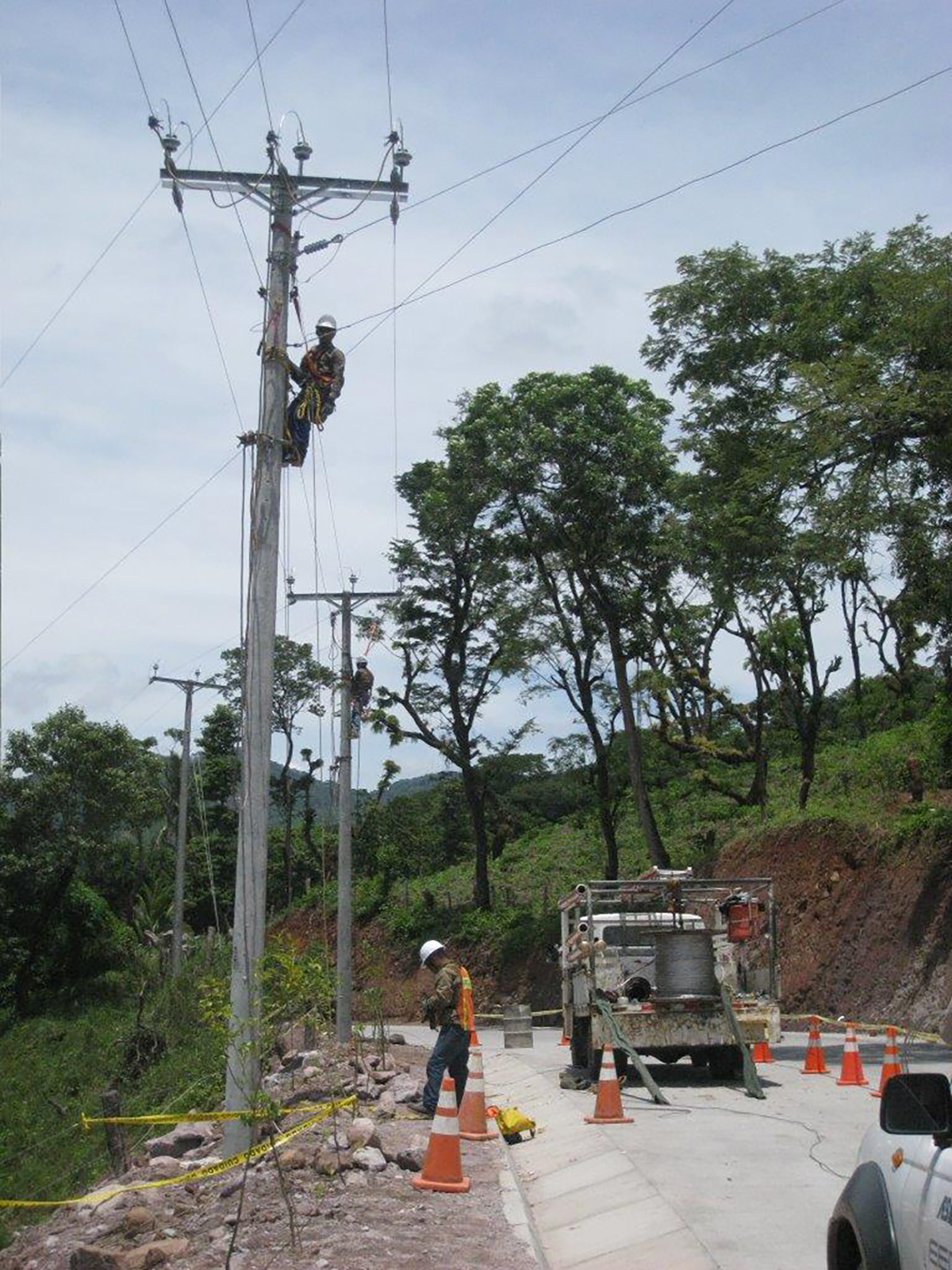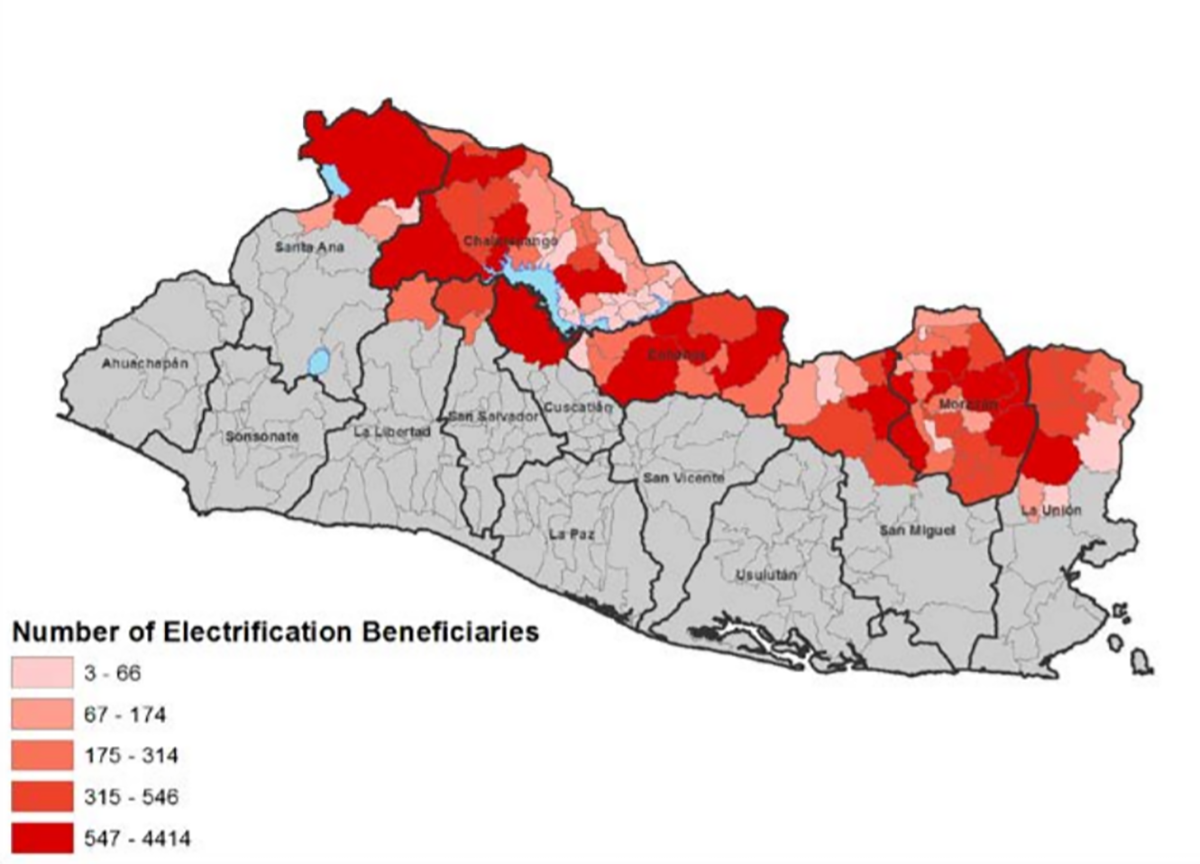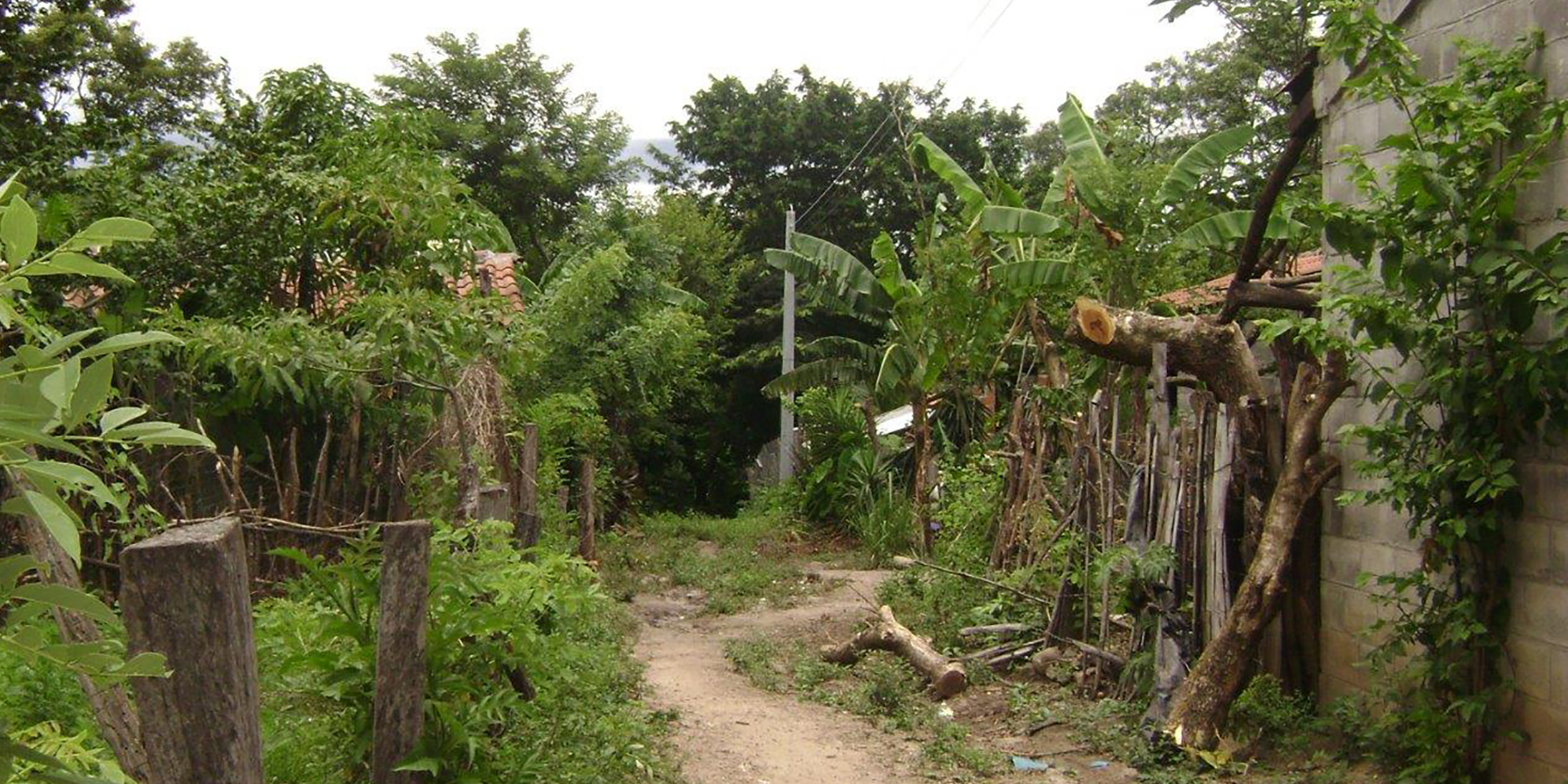Program Overview
MCC’s $449.6 million El Salvador Compact (2007-2012) extended the electrical grid and provided individual household connections across the Northern Zone of El Salvador through the $30.34 million Rural Electrification Sub-Activity. The Sub-Activity was built on the theory that improving access to the electricity network and shifting use of energy alternatives would decrease indoor air pollution and improve health outcomes, which in turn would increase households’ economic productivity and incomes.
Evaluator Description
MCC commissioned Social Impact (SI) and the International Food Policy Research Institute (IFPRI) to conduct an independent final impact evaluation of the Rural Electrification Sub-Activity. Full report results and learning: https://data.mcc.gov/evaluations/index.php/catalog/111.
Key Findings
Connections
- Households that received subsidies to reduce electricity connection fees were 11 to 19 percentage points more likely to get a formal connection to the grid than comparison households. Having a nearby neighbor connect also increased the probability for a household to connect to the grid.
Use of Electricity
- Connecting to the grid led to a 13% increase in non-agricultural work, relative to the comparison group. Workers, especially women, in connected households were 12 percentage points more likely to operate a home business than workers in the comparison group.
Indoor Air Quality
- Use of electricity decreased indoor air pollution by 67-73% due to substitution away from kerosene as a lighting source, resulting in 37-44% fewer acute respiratory infections in children, relative to the comparison group.
Education
- Connecting to the grid increased the probability of school-age children participating in education activities (studying, time at school, going to and from school) by 78 percentage points, relative to the comparison group.
Household Income
- Connected households experienced an annual net income increase of $111, relative to the comparison group (an 8.8% increase from baseline).
Evaluation Questions
This final impact evaluation was designed to answer the following questions:- 1 What is the impact of electrification on the cost of energy and energy consumption?
- 2 What is the impact of introducing energy-efficient technology (i.e. connection to the grid vs other sources of off-grid energy) on uses of electricity?
- 3 What is the impact of electrification on time allocation, indoor air quality, and productive activities?
- 4 What is the impact of expanded access to and use of electricity on household economic welfare?
Detailed Findings
All results reported below are impact estimates derived from a comparison between the group of households that received the program intervention and a group of similar comparison households, unless otherwise stated. As such, a reported increase or decrease should be interpreted as a change above and beyond that of the comparison group, not a change relative to baseline.Connections
Households that received subsidies to reduce connection fees were between 11 and 19 percentage points more likely to get a formal connection to the grid than control households. Reducing the connection fee by $10 increased the probability of connection by 2 percentage points, though with diminishing returns to increasing the amount of the subsidy. There appeared to be an important spillover effect, wherein households were more likely to connect to the electrical grid if others nearby had already connected. An additional connection within 100 meters increased the probability of a single household having a connection by 10 percentage points.
Use of Electricity
As a result of connecting, households were 24 to 33 percentage points less likely to use kerosene, thereby reducing fuel costs by $9.88/month or $118.56/year per household. Electrification also increased ownership of “leisure” items, like TVs and DVD players, but also appliances that could be used for home production, including refrigerators (54 percentage points), blenders (25 percentage points), and washers (13 percentage points). As a result, non-agricultural work increased by 13 percentage points. Electrification also increased the probability of operating a home business by 12 percentage points. The effect is concentrated among women, with women from on-grid households being 25 percentage points more likely to operate a home business. These changes imply income flows that are more diverse and perhaps less volatile, promoting resilience and helping bring households out of poverty.
Indoor Air Quality
At night, households with no access to electricity mostly use candles or kerosene lamps to satisfy their illumination needs. These sources of light provide poor illumination and, more dangerously, emit high amounts of pollutants harmful to human health. Subsidy recipients showed drastic reductions in indoor air pollution compared to the control group, with a 67-73% lower fine particulate matter, which resulted in a 37-44% reduced rate of acute respiratory infections among children under the age of 6.
Education
Connecting to the grid created a home environment that increased by 78 percentage points the probability of school-age children participating in education activities (studying, time at school, going to and from school), including a 54 percentage point increase in the probability of spending time studying at home.Household Income
The evaluation found mixed evidence on the effects of electrification on household income. From the experimental analysis there is a strong indication of an increase in income for households that connected because they received a voucher; however, the point estimate is not statistically significant. The non-experimental effects are more modest and more precisely estimated. The non-experimental effects suggest an increase of $55 in non-labor net income (18 percent increase from baseline) and $208 on labor net income (20 percent from baseline). The effect on total net income is $111 (8.8 percent of the baseline). The differences across these estimates show that the effects could be very large for the households that connected to the grid because of the voucher.MCC Learning
- Lowering the up-front costs for formal household electricity connections can be effective at increasing such connections. The evaluation showed that in El Salvador, where electrification rates were already close to 80% of the population in the Northern Zone, and where household income was around $2,400, providing a subsidy of 20% or 50% of the connection fee to a household for an electricity connection was effective at increasing connections.
- Households in areas with numerous informal connections are more likely to establish formal connections when they see their neighbors formally connecting. This finding implies that funds could be used more efficiently by strategically connecting some households in areas with a large number of informal connections.
- Rural electrification can change behaviors rapidly. It can replace the use of alternative energy sources in a short period of time. The evaluation showed that households in El Salvador switched quickly from using kerosene for lighting to electricity and it had a significant impact on air quality and health. Similar changes could be expected in countries with high formal and informal electrification rates.

Evaluation Methods
SI/IFPRI evaluated the Rural Electrification sub-activity’s impact on identified outcomes using data from the Household Survey to Evaluate the Impact of the Connectivity and Rural Electrification Projects (EHEIPCER). SI/IFPRI used two main empirical strategies to identify the effects of electrification on the outcomes of interest: (1) random encouragement and (2) difference-in-difference (fixed-effects estimation). The evaluation results reflect an exposure to treatment of one to four years, depending on when the respondent connected.
Difference in Difference: To identify the impact of electrification, SI/IFPRI compared the change in the identified outcomes in the households that received electricity later (or that never received it during the evaluation period) with the change in the identified outcomes in households that were connected early on.
EHEIPCER Surveys: SI/IFPRI worked with the El Salvador General Directorate of Statistics and Census (DIGESTYC in Spanish) to administer five EHEIPCER household surveys during 2009-2013, to collect data on demographic characteristics, health, education, housing characteristics, energy use, income, and consumption—among other factors. Strict training sessions were conducted to ensure high quality in data collection, which was conducted with hand-held computers. Surveys were conducted in 1,632 households across 45 communities.
Concurrent with the household survey, SI measured the level of air pollution inside the home in a subsample of households.


